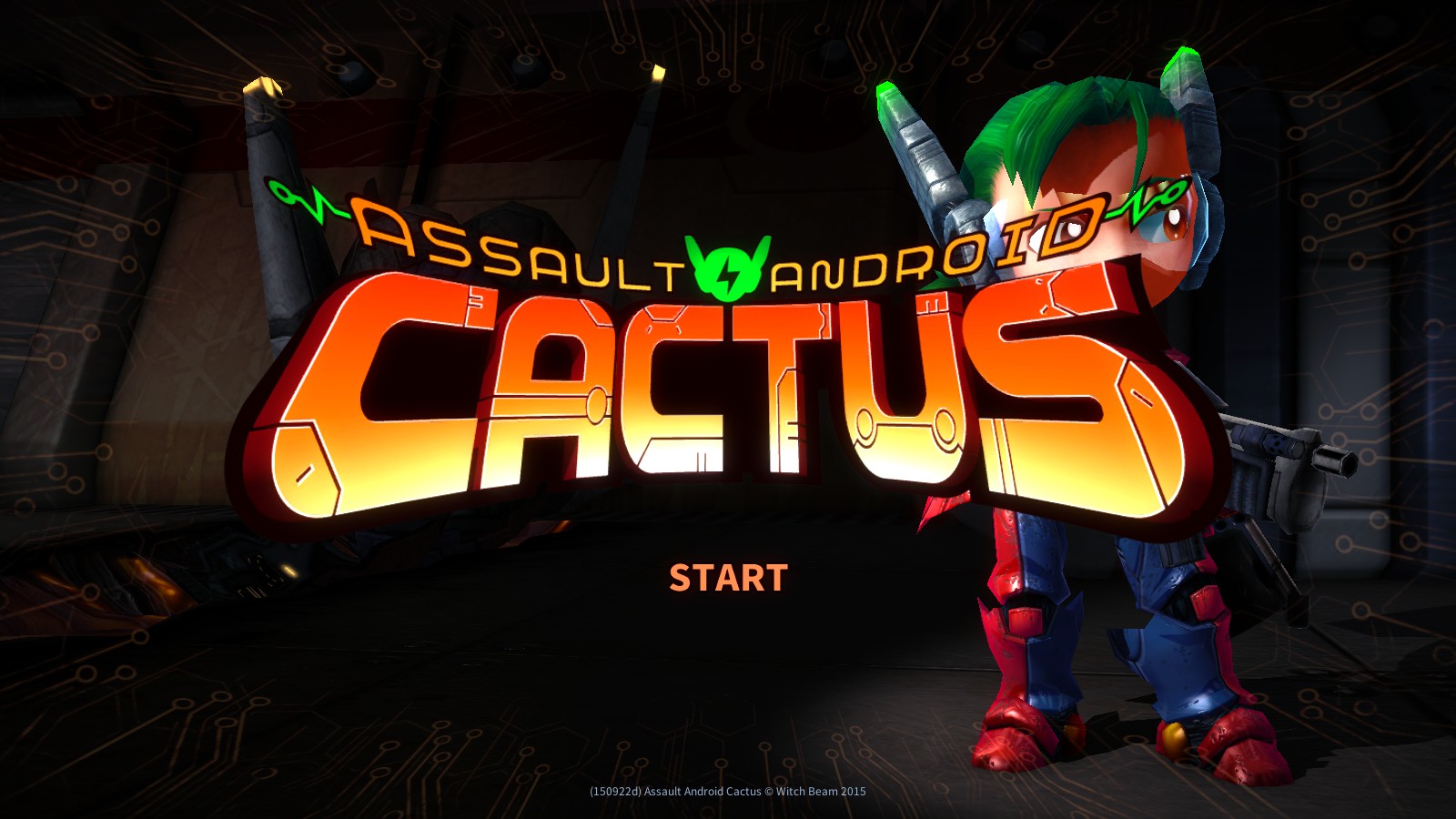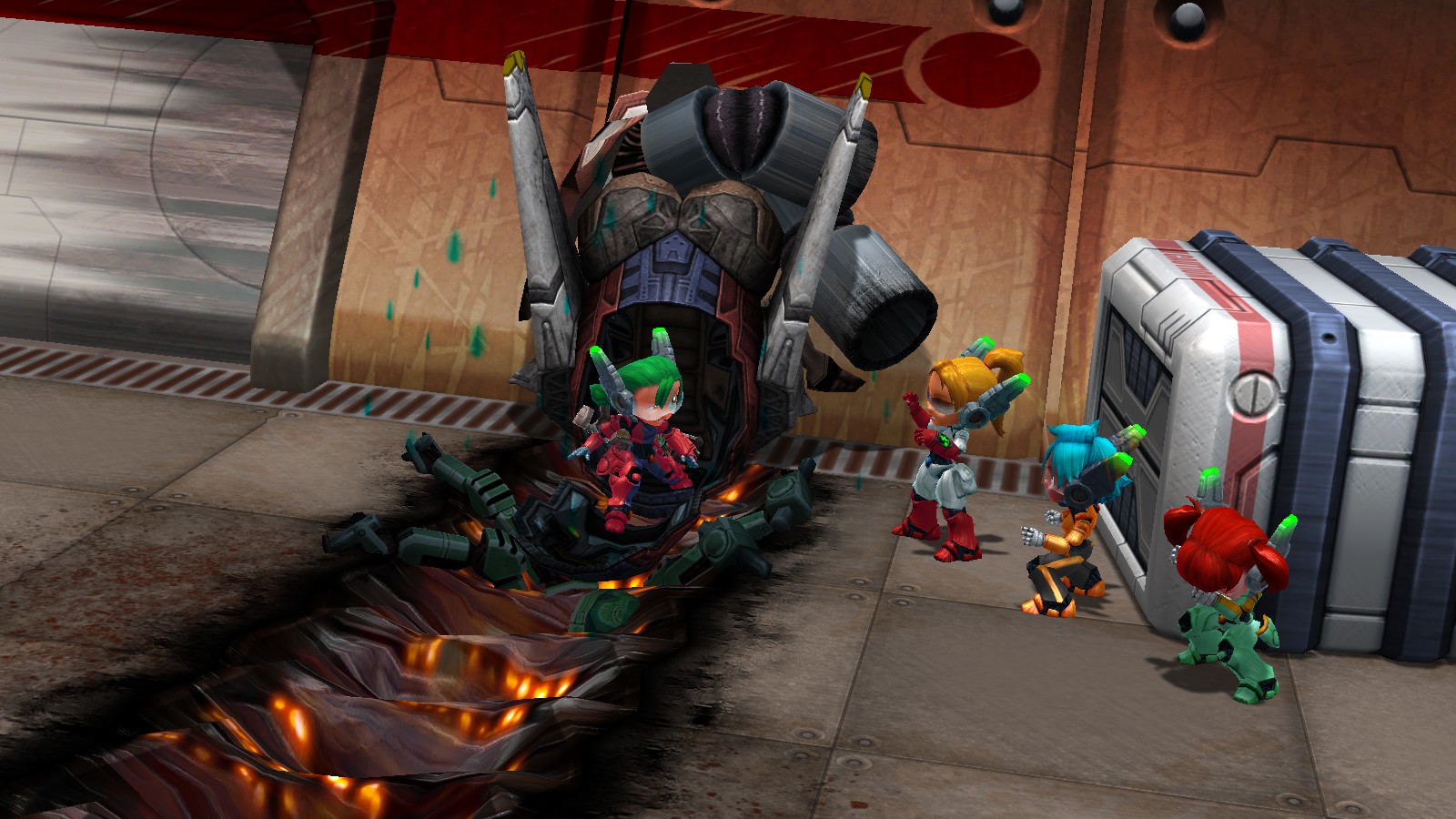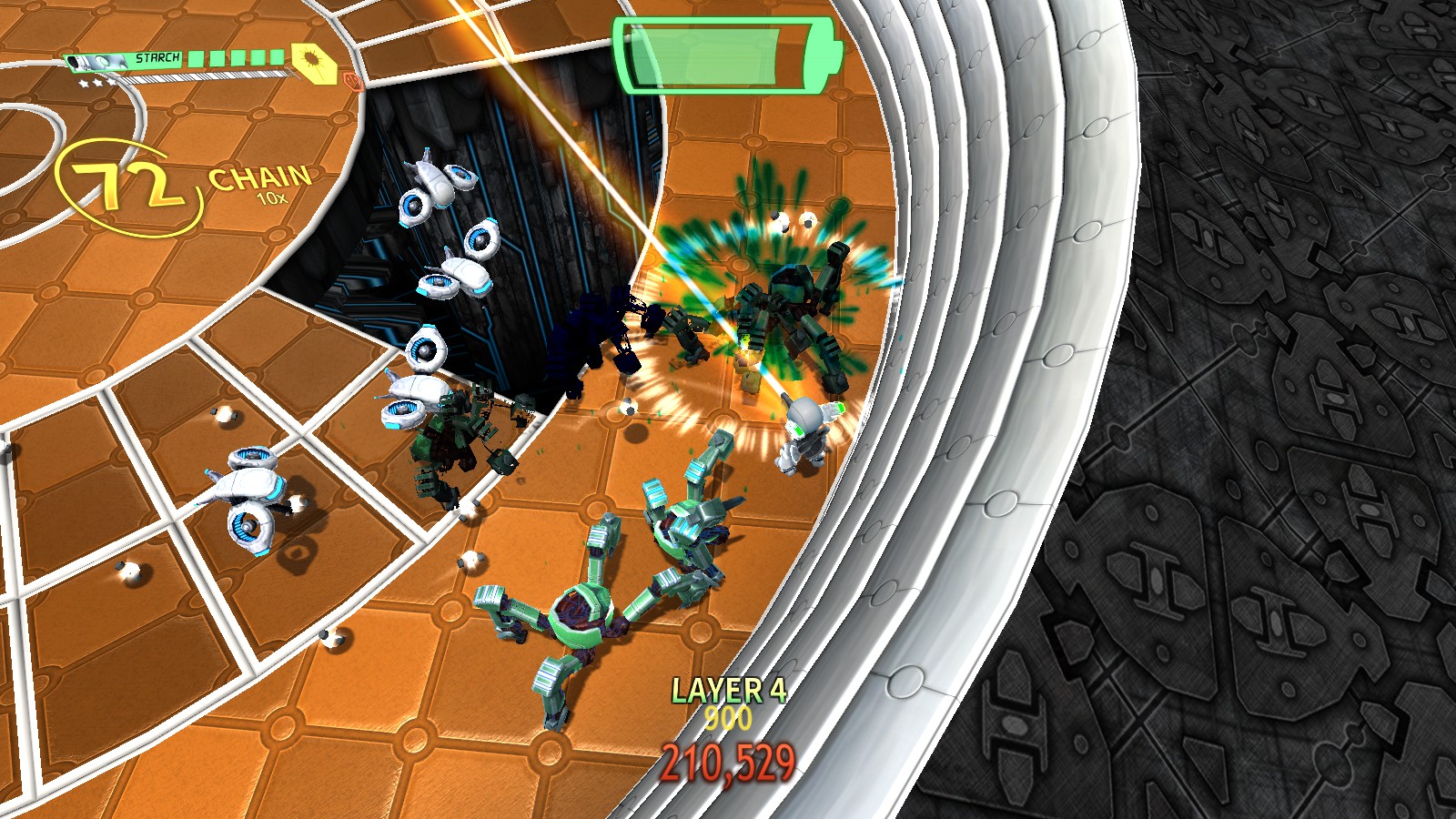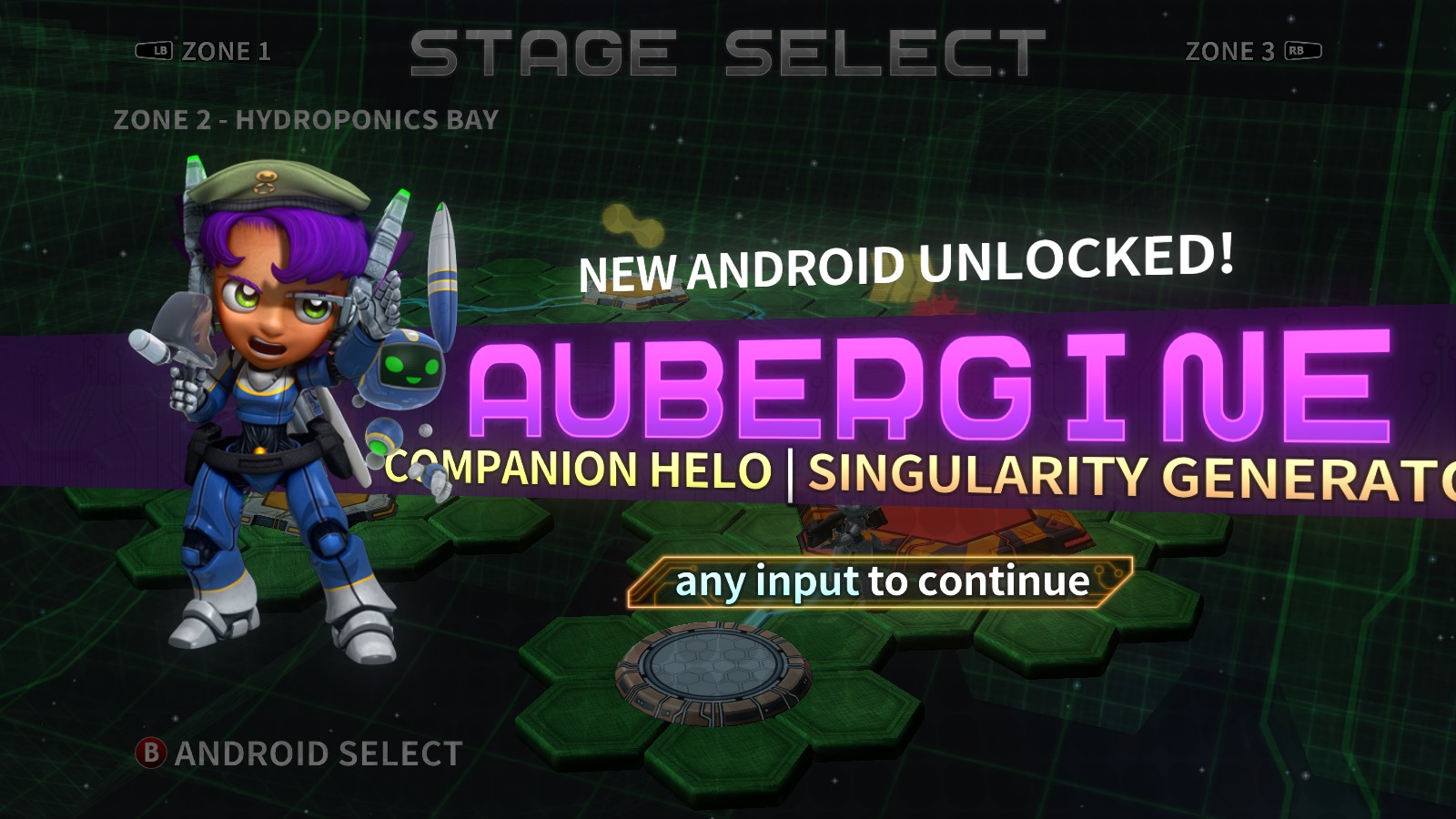Review: Assault Android Cactus

The controller is at the ready. A logo renders on the screen while a voice reads out the name of the company. A splash of colour declares the title and an upbeat track that’s unmistakably gamey begins to play. Seconds after pressing start, you’re past the menu and watching a cutscene that gives all the premise that the game needs. A little later, you’re in. There’s enemies everywhere, flashing left and right, and all the while your heart pounds in your chest while you make sense of frantic action played out in vibrant colour. Everything moves at a relentless speed – there’s no slow boil here – the metal is pushed down as fast and as hard as it’ll go, keeping the pace high until either the level is through, or you are.
This is Assault Android Cactus.
That description could just as easily find root in describing classic SEGA, and it’s here, to the mood of that long-extinct console that this speedy twin-stick shooter takes us to. It isn’t that it’s a shadow of an older game, but somewhere amongst the characteristics that blend a blur of colour with catchy music, this feels like a descendant of that time. Paradoxically, it also invokes the feel of 90s PC arcade games. There’s a taste of Time Soldiers, Dyna Blaster and Star Control purely in terms of flavour, while the gameplay and style are completely distinct from any of those. It’s more the case that the focus is on excitement, and it does so without understating it with subdued tones, gradual pacing, or ambient music. That’s not the sort of game this is at all.

The story is the ticket to get you in the door, but not much beyond. A distress signal brings the titular character Cactus (an Assault Android) to a ship in turmoil. Service robots all over the ship are in revolt, and it’s a few independent androids that are resisting. There are three to begin with, each one of them playable, with their own unique style, personality and more importantly, their own unique weaponry. Each of the androids appear female, but it’s merely a fact of the Assault Android Cactus universe that they are who they are, and each are treated as separate, distinct characters. Boss encounters will vary dialogue according to who you’re playing with, but it’s all about their personality. By virtue of having so many androids, each can also have flaws without becoming a stand-in meant to represent half the world’s population.
The variations come mostly from the different characters you have, either because you begin with them or because you unlock them as you play. We’ll let you work out just how many there are. That choice in which android you use (and you’ll have a few favourites before long) means that some levels or bosses might be better fought with particular androids (like, you will want to go Starch when you get to Vespula).
Assault Android Cactus has that mix of excitement and pure-play that hits the right notes. It isn’t exceptionally deep, but it’s frantic while you’re playing. Even when you fail, you always feel as though you can do a little better next time, and all through playing. One of the most surprising aspects is a few times after stopping, we immediately wanted to throw the game on again and get back to playing.

There’s an exhilarating element, and for some it’s going to be about getting up on that leaderboard, or plowing through the robots without breaking combo, but there’s also elegance working toward the atmosphere.
That seems an odd word to use for a twin-stick shooter, but it fits.
Everything’s colourful, shiny, and crisp. It looks fantastic, runs mostly smoothly (the cutscenes are a little iffy), and while it might have the feel of an older game, it comes at a quality that’s on par with any modern arcade games. Character design is bundled with personality, and while they’re all clearly androids and sort of similar, none of them really feels like a reskin of another.
There’s a great variety of tracks, lots of sound effects, and there’s even a sound test. What was the last game that even had a sound test option? The last game we remember having that (and it was far from the last game was Aladdin on the Mega Drive. That’s twenty-three years. Who even does that anymore? Apparently Witch Beam Games does. Each android also has their own short snapped-off dialogue when you collect power-ups, so you’ll hear things like Accelerate! or Pineapple! Right, so some of the Androids may not be at their A-game.

Difficulty of the game, well, it’s there. The bosses were an extra level of hopelessness past the struggle to get through a level, and that’s a source of frustration. The Extra Options that you can unlock via the game credits are cool, but the credits are earned at a slow rate. Some are pure cosmetic, while others like the first person mode completely switch it around. Unfortunately there’s no separate leaderboard for that. It’s also possible to play with others, which will get all kinds of hectic.
One of the most surprising things about this game is that it’s an indie game. Witch Beam is a local developer based in Brisbane, Australia, and the polish that’s on Assault Android Cactus puts it amongst some pretty extreme company.
It’s without hesitation that we recommend Assault Android Cactus. It’s a great indie game, exciting to play, but to really get to the centre of what the game’s about, it’s fun. Simple, straightforward fun – just like there used to be after jamming a cartridge in the slot many lives ago.
Assault Android Cactus is out now on Steam. PS4, Vita and WiiU releases of the game are currently slated for Q1 2016. Review copy of Assault Android Cactus provided to Save Game by Witch Beam.



